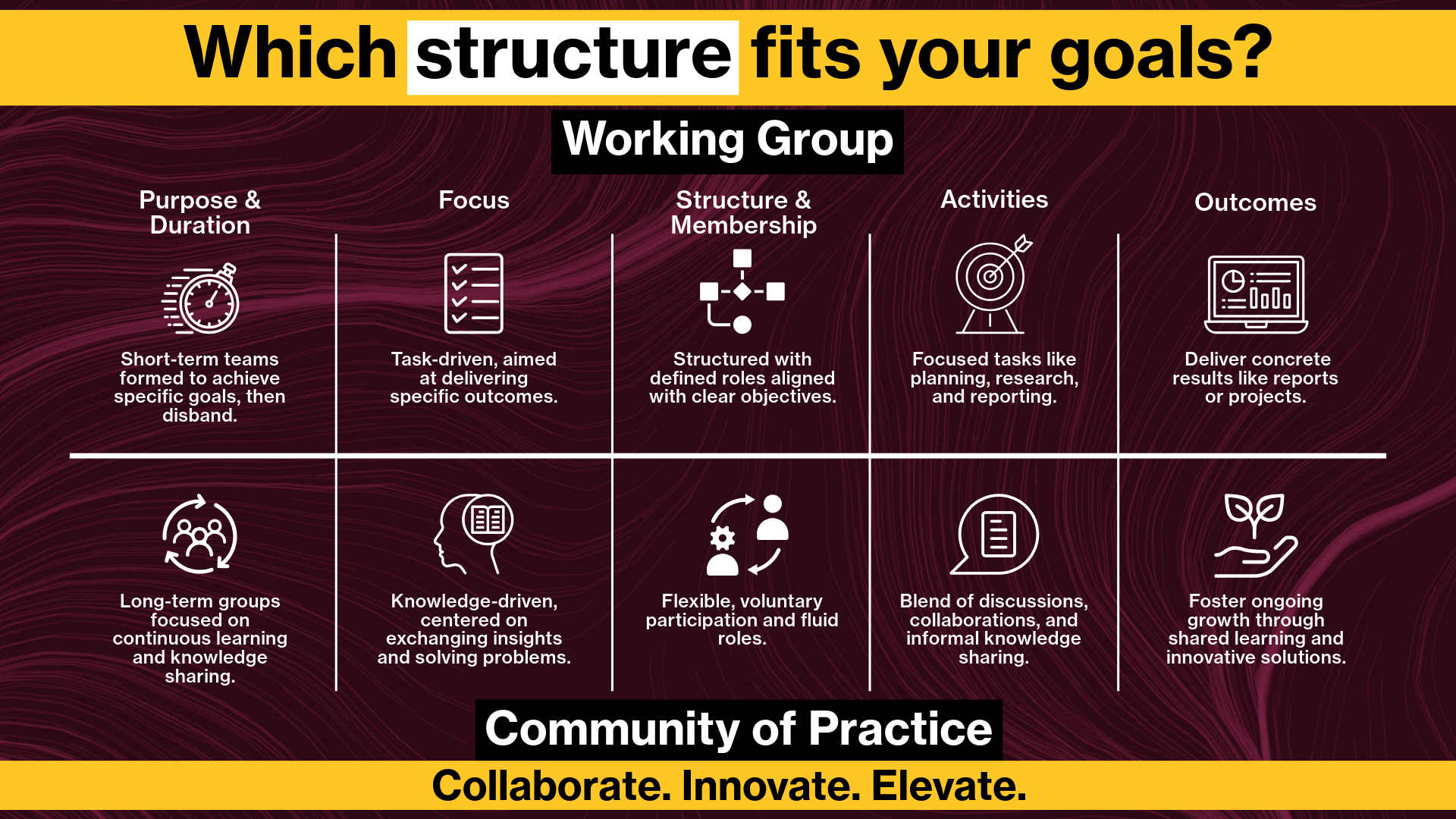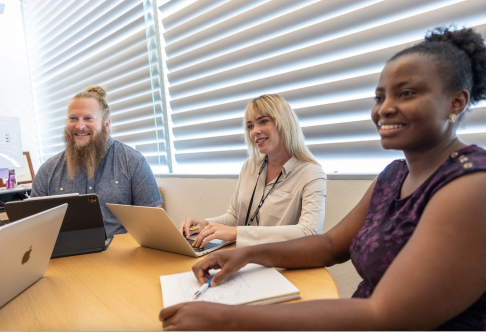Communities of Practice Overview
A Community of Practice (CoP) is a group of people who share a common interest or profession and collaborate regularly to share knowledge, solve problems, and develop new skills. CoPs foster continuous learning, innovation, and professional growth through structured and informal interactions, leveraging collective expertise and experiences to achieve shared goals. In an educational context, CoPs enable members to exchange best practices, research findings, and project plans, enhancing both individual and collective performance.
Themes for these CoPs might include AI in education, research advancements, ethical AI, AI tools and techniques, and AI for administrative efficiency. Participants will exchange best practice guides, case studies, research findings, project plans, and collaborative tools, driving AI innovation and practical applications across ASU.




